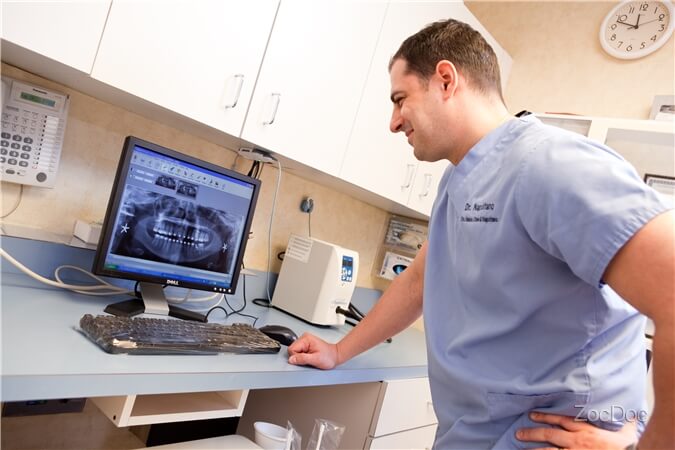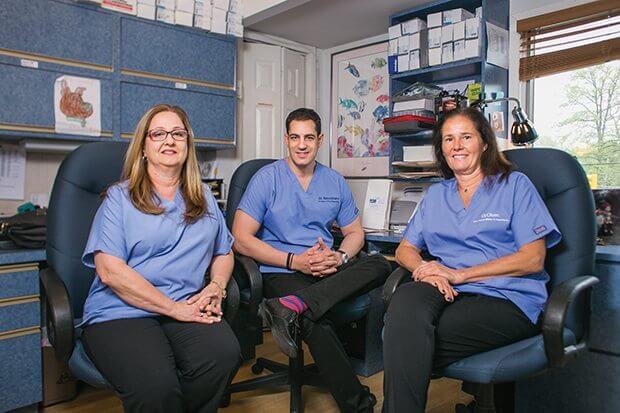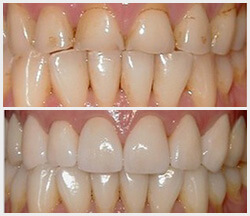Temporomandibular joint disorder (TMD) affects the jaw joint and surrounding muscles. It can cause various symptoms, such as pain, stiffness, and difficulty chewing or speaking. Diagnosing TMJ disorders can be challenging because the symptoms are often similar to other conditions.
Fortunately, advanced imaging techniques can provide a detailed look at the joint and surrounding structures, allowing for accurate diagnosis and treatment. Explore the different dental technology for TMD detection at our Staten Island dental office.
What Are Advanced Imaging Techniques?
Advanced imaging techniques refer to a group of non-invasive medical imaging methods that use innovative technology to produce detailed images of the human body. These techniques have revolutionized how dentists like Dr. Name diagnoses and treat medical conditions, allowing for more accurate and precise diagnoses and treatment plans. This can include X-rays and 3D imaging solutions, like CBCT scans.
Diagnostic Technology for TMJ Disorders
Computerized Jaw Tracking
Computerized jaw tracking uses electronic sensors to track the movement of the jaw as it opens and closes. This technology can provide detailed information about jaw movement and can help diagnose TMJ disorders that may result from jaw misalignment or muscle dysfunction.
Dental X-Rays
Dental X-rays are common imaging techniques used to diagnose TMJ disorders. They provide a two-dimensional image of the jaw and can help identify structural abnormalities, such as bone loss or damage to the joint.
Cone Beam CT Scans
Cone beam computed tomography (CBCT) provides a three-dimensional image of the jaw and surrounding structures. This advanced imaging technique can help diagnose complex TMJ disorders, as it can provide detailed information about bone structure, soft tissue, and joint space.
Magnetic Resonance Imaging (MRI)
Magnetic resonance imaging uses a strong magnetic field and radio waves to produce detailed images of the jaw and surrounding structures. MRI is particularly useful in diagnosing soft tissue abnormalities, such as cartilage damage or inflammation.
Benefits of Using Technology to Diagnose TMD
Traditional diagnosis and treatment methods for TMD have involved manual testing and examination, but technology has brought about several benefits to help diagnose and manage TMD:
- Accuracy: Advanced imaging techniques such as magnetic resonance imaging (MRI) and computed tomography (CT) scans can help identify structural abnormalities in the jaw and pinpoint the exact location of the problem. This enables a more accurate diagnosis and an appropriate treatment plan.
- Non-Invasive Methods: Advanced imaging techniques can provide images without invasive procedures, making the diagnostic process much more comfortable for patients.
- More Accurate Detection: With detailed images of the jaw and surrounding structures, your dentist can identify the source of the problem and determine the most appropriate treatment plan. This precision in treatment planning results in a more successful outcome and faster recovery time.
- Patient Education: Technology has made it easier for dentists to educate their patients about their conditions. With detailed images of the jaw and surrounding structures, patients can better understand their diagnoses.
The Future of TMD Care
The treatment of temporomandibular joint disorders (TMD) is constantly evolving, and new technologies and trends are emerging that have the potential to revolutionize TMD care. The use of technology in TMD treatment has already led to significant improvements in diagnosis and treatment options, but the future promises even more exciting advancements.
Frequently Asked Questions
How are TMJ disorders traditionally diagnosed?
Traditionally, TMJ disorders are diagnosed through manual testing and examination. This can involve palpating and manually manipulating the jaw joint to assess for pain, tenderness, and limited movement. Technology streamlines this process for faster treatment.
How does cone beam computed tomography (CBCT) differ from traditional X-rays in TMJ diagnosis?
CBCT provides a 3D image of the jaw and surrounding structures, whereas traditional X-rays only provide a 2D image. CBCT allows for a more detailed and accurate diagnosis of TMJ disorders, as it can provide information about bone structure, soft tissue, and joint space. Your dentist will determine which diagnosis tool is best for you at your initial consultation.
Is it challenging to diagnose TMJ?
Yes, TMJ disorders can be hard to diagnose because the symptoms can be similar to those of other conditions. However, with a thorough examination and advanced imaging techniques, such as MRI or CBCT, a diagnosis can be made.
Is technology in TMJ detection safe?
Yes, technology in TMJ detection is safe. Advanced imaging techniques, such as MRI and CBCT, are non-invasive and don’t use ionizing radiation, which can be harmful. However, as with any medical procedure, there are some risks involved, and patients should discuss any concerns with their healthcare provider.
Get to the Bottom of Your TMD Symptoms With Advanced Technology
Advanced imaging techniques have revolutionized the diagnosis and treatment of TMJ disorders. By providing detailed and accurate information about the jaw and surrounding structures, dentists and oral surgeons can develop more effective treatment plans and improve patient outcomes.
Call our Staten Island dentists today to learn more about the benefits of advanced diagnostic technology and start your journey to improved oral health.



Insurance
We accept many insurances. Please contact one of our Insurance Coordinators to discuss your dental coverage plan.
(718) 948 5111
appointments@sidental.com
Open 7 days a week
Reviews
The dentists are absolutely excellent…
“I have been going here for years. The dentists are absolutely excellent and they always have an appointment available that fits into a busy schedule. I also completed invisilgn and my teeth are perfectly straight now. They also practice preventive medicine and just went in for my 6 month cleaning. Every time feel like I have a new set of choppers and best yet the check up noted no cavities!.”
— J.R
Pleasant visit
“As usual, it was a pleasant visit thanks to Dr. Nasso and her great staff..”
— C.M.
Always treated with courtesy and respect.
“Always treated with courtesy and respect. All of my questions were answered regarding upcoming treatments..”
— J.C.
Smile Profile




Put your best face forward.
Create a positive change to your teeth and your smile.
